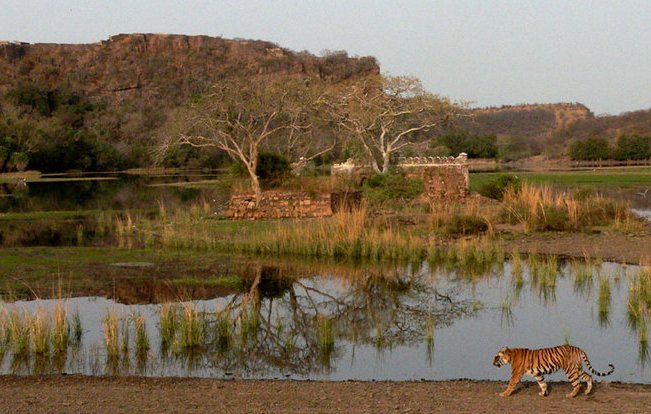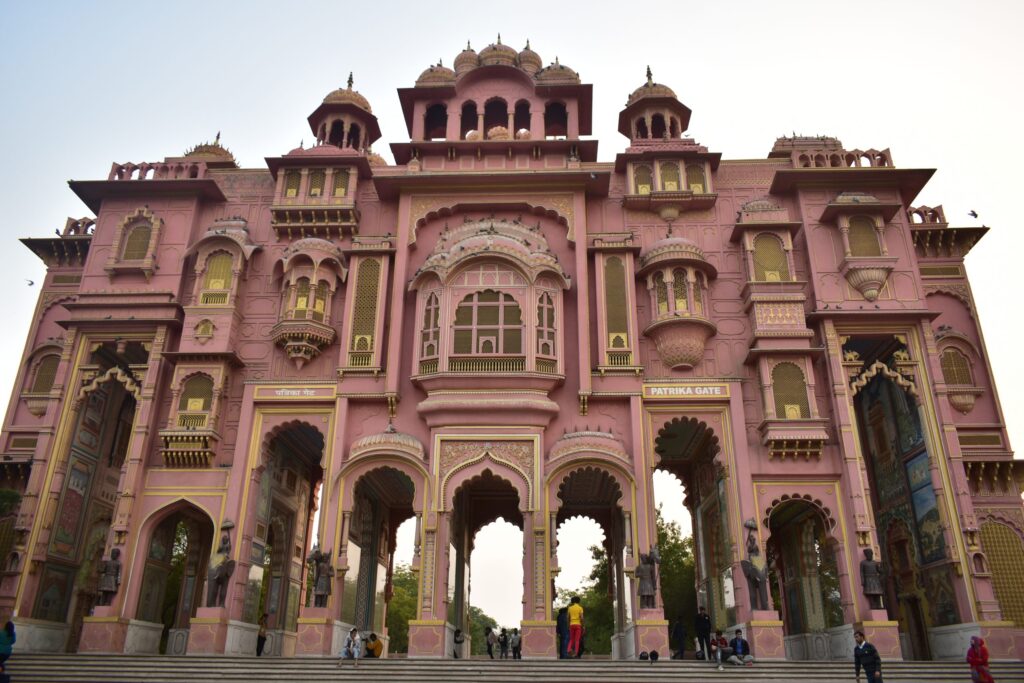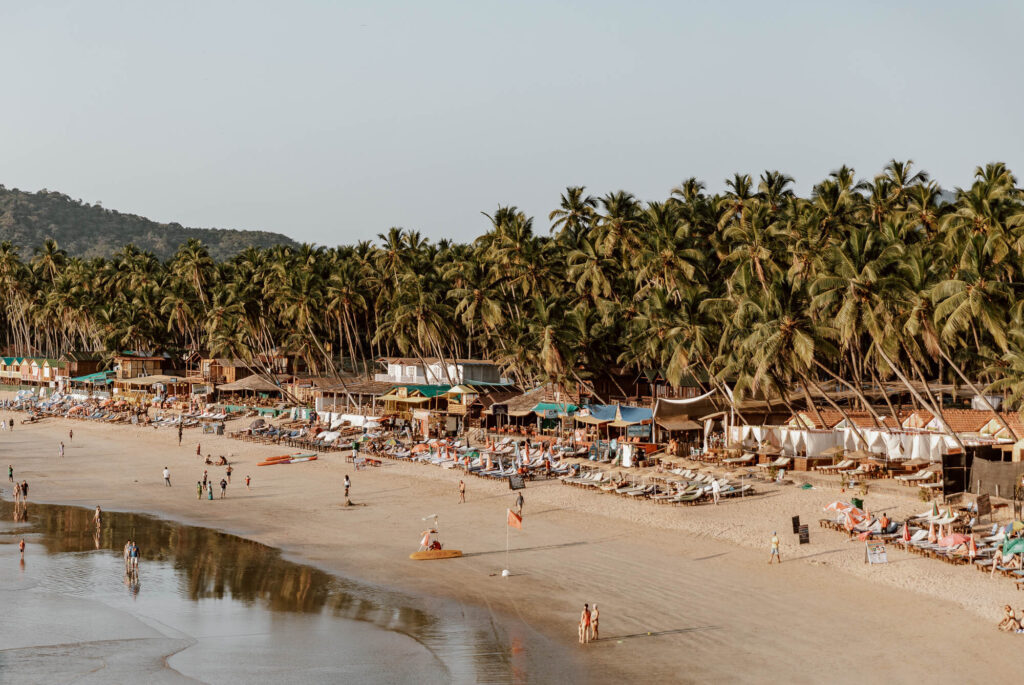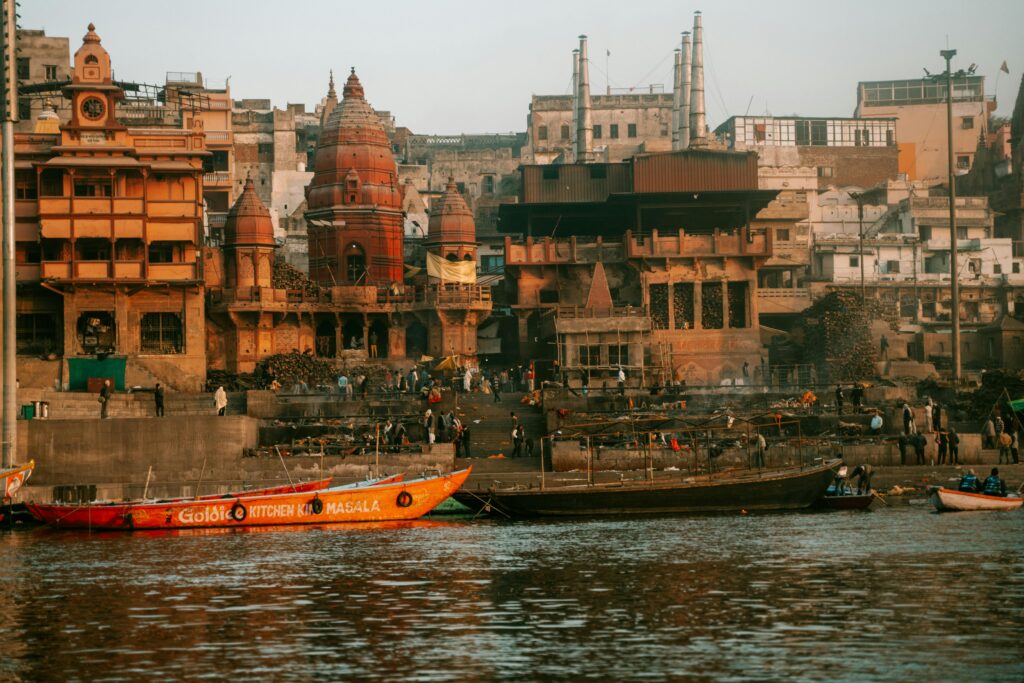Nestled in the heart of Rajasthan, Ranthambore National Park is a paradise for nature enthusiasts, wildlife photographers, and adventure seekers. Known for its majestic Bengal tigers and rich biodiversity, Ranthambore offers an unforgettable experience.
Whether you’re planning a weekend getaway or a longer adventure, this guide will help you explore Ranthambore with ease.
Why Ranthambore?
Ranthambore is not just a tiger reserve; it’s a melting pot of history, culture, and nature. Once the hunting grounds of the Maharajas of Jaipur, this protected area under Project Tiger offers a unique blend of natural beauty, wildlife, and historical grandeur.
Adding to its charm is the spiritual essence brought by its ancient temples.
How to Reach Ranthambore
By Air:
The nearest airport is Jaipur International Airport, approximately 160 km away. From Jaipur, you can hire a taxi or take a train to Sawai Madhopur, the nearest railway station to Ranthambore.
By Train:
Sawai Madhopur Railway Station is well-connected to major cities in India, including Delhi, Mumbai, and Jaipur. The train journey is comfortable and economical, making it a preferred choice for many travelers.
By Road:
Ranthambore is easily accessible by road from nearby cities. Buses and taxis run frequently from Jaipur, Kota, and Delhi. Self-driving is also an option, with well-maintained highways ensuring a smooth journey.
Best Time to Visit
Ranthambore is open from October to June, with the winter months (October to March) being the most popular for tiger sightings. Summers (April to June) are also good for wildlife spotting, as animals are often seen near water bodies.
Occasions to Celebrate:
Visiting during festivals like Diwali or Holi adds a unique charm, as the nearby villages light up with traditional celebrations.
Places to Explore
1. Ranthambore National Park


Ranthambore National Park is one of the largest and most renowned wildlife reserves in India, covering an area of approximately 392 square kilometers. It is part of the Project Tiger conservation initiative, making it a prime destination for tiger enthusiasts.
- Wildlife: Apart from Bengal tigers, you can spot leopards, sloth bears, striped hyenas, wild boars, sambar deer, and over 300 species of birds like Indian gray hornbills, kingfishers, and crested serpent eagles.
- Safari Details: Safaris are conducted twice daily, in the early morning and late afternoon. You can choose between a 6-seater open jeep or a 20-seater open canter, depending on your group size and preference.
- Zones: The park is divided into 10 safari zones, each offering unique landscapes and wildlife experiences. Zone 3 is particularly famous for tiger sightings near Padam Talao.
- Best Time for Safari: Winter (October to March) is ideal, but summer (April to June) increases the chances of spotting tigers as animals frequent water sources.
2. Ranthambore Fort


Rising 700 feet above the surrounding plain, the Ranthambore Fort stands as a symbol of Rajasthan’s rich history. Built in the 10th century by the Chauhan rulers, it has been a witness to many battles and sieges.
- UNESCO Heritage Status: The fort is part of the Hill Forts of Rajasthan, recognized for its architectural significance.
- Attractions: The fort houses several temples, mosques, and reservoirs. Hammir Court, Rani Palace, and Badal Mahal are key highlights.
- Panoramic Views: From the fort’s ramparts, you can enjoy breathtaking views of the park, including lakes, forests, and open grasslands.
- Accessibility: A short trek leads to the fort, and the path is lined with langurs and occasional deer sightings.
3. Padam Talao


Padam Talao is the largest and most scenic lake in Ranthambore National Park. It serves as a lifeline for the park’s wildlife, especially during summer.
- Lotus Flowers: The lake is named after the lotus (Padam) flowers that bloom seasonally, creating a stunning visual contrast against the rugged surroundings.
- Wildlife Sightings: You may spot tigers, marsh crocodiles, and herds of deer grazing along the banks. Early morning safaris often catch tigers lounging near the lake.
- Jogi Mahal: Located on the lake’s edge, this historic hunting lodge was once used by royalty and offers a picturesque backdrop for photographs.
4. Trinetra Ganesh Temple


The Trinetra Ganesh Temple, situated within Ranthambore Fort, holds immense religious and cultural significance.
- Mythological Background: According to legend, Lord Ganesh appeared in King Hammir Dev Chauhan’s dream and blessed him with a vision of success during a siege. The king subsequently built this temple.
- Unique Rituals: Devotees send wedding invitations and other important documents to the temple, believing that Ganesh’s blessings will ensure prosperity. The temple receives thousands of such letters every year.
- Festivals: During Ganesh Chaturthi, the temple becomes a hub of activity, with vibrant celebrations and fairs.
- Architecture: The temple’s simple yet ancient design adds to its spiritual charm, making it a serene spot to visit after a wildlife safari.
5. Kachida Valley
Located on the outskirts of the park, Kachida Valley offers a tranquil escape into the wilderness, away from the more frequented safari zones.
- Leopard Habitat: The valley is known for its high leopard population. Leopards often avoid tigers and prefer the rocky terrain of this area.
- Other Wildlife: The valley is also home to sloth bears and jackals.
- Scenic Beauty: Kachida Valley is dotted with rocky outcrops and lush greenery, making it a beautiful spot for nature photography.
- Exploration: Although not a primary safari zone, guided tours can be arranged for a more private experience of the valley.
6. Raj Bagh Ruins


The Raj Bagh Ruins, located between Raj Bagh Lake and Padam Talao, offer a glimpse into the bygone era of royalty and opulence.
- Architecture: The ruins include stone arches, domes, and palace remains, hinting at their once-grand structure.
- Mystical Aura: Covered in creepers and moss, the ruins exude a mystical charm, especially during early morning safaris.
- Wildlife Interaction: The area around the ruins is frequented by animals like tigers, leopards, and deer, making it an exciting spot for both wildlife and history enthusiasts.
- Photography Haven: The juxtaposition of ancient architecture with natural surroundings makes this a favorite spot for photographers.
Where to Stay
Luxury Resorts:
- Aman-i-Khas: A luxurious tented camp offering a royal experience.
- Oberoi Vanyavilas: Known for its exceptional service and proximity to the park.
Mid-Range Hotels:
- Tiger Den Resort: Comfortable stay with modern amenities.
- Ranthambhore Regency: A family-friendly option with good reviews.
Budget Options:
- Hotel Green Valley: Affordable yet comfortable.
- Raj Palace Resort: Basic facilities at an economical price.
Best Localities: Sawai Madhopur town and its outskirts are the most convenient areas for staying, providing easy access to the park and other attractions.
Local Food and Dining
Ranthambore offers a mix of traditional Rajasthani cuisine and global dishes. Don’t miss local delicacies like:
- Dal Baati Churma: A signature dish of Rajasthan.
- Laal Maas: Spicy mutton curry for non-veg lovers.
- Gatte ki Sabzi: A vegetarian delight made with gram flour dumplings.
Recommended restaurants:
- The Food Court in Sawai Madhopur: Great for quick meals.
- Vivanta by Taj: Offers a fine dining experience.
- Ranthambore Heritage Haveli Restaurant: Serves authentic Rajasthani food in a traditional setting.
How Many Days to Plan?
A 2-3 day trip is ideal to cover all major attractions and enjoy multiple safaris. For a more relaxed experience, a 4-day itinerary allows you to explore at a leisurely pace.
Budget Planning
Low Budget (₹5,000-₹10,000 per person):
- Budget accommodation.
- Shared jeep or canter safari.
- Local transport and affordable meals.
Mid-Range Budget (₹10,000-₹20,000 per person):
- Mid-range hotels.
- Private jeep safari.
- Better dining options.
Luxury Budget (₹20,000+ per person):
- Luxury resorts.
- Exclusive safari experiences.
- Fine dining and private transport.
Is Ranthambore Safe?
Ranthambore is a safe destination for all types of travelers, including families, solo adventurers, and couples. Follow park guidelines during safaris and respect wildlife. Stick to guided tours and avoid venturing into restricted areas.
Other Useful Tips
- Safari Booking: Book safaris well in advance, especially during peak season.
- Clothing: Wear earthy tones to blend in with the surroundings. Comfortable shoes and light clothing are essential.
- Photography: Carry a good zoom lens for capturing wildlife.
- Cash and Connectivity: Carry cash as some areas may not have card facilities. Mobile connectivity can be spotty inside the park.
- Local Guides: Hiring a knowledgeable guide enhances your experience with insights about wildlife and the park’s history.
Conclusion
Ranthambore is a dream destination for nature and wildlife enthusiasts. With its thrilling safaris, historic landmarks, vibrant culture, and the spiritual experience of visiting the Trinetra Ganesh Temple, Ranthambore promises an experience you’ll cherish forever.
Whether you’re traveling solo, with family, or friends, Ranthambore offers something for everyone.
Plan your trip today and embark on an adventure like no other!




